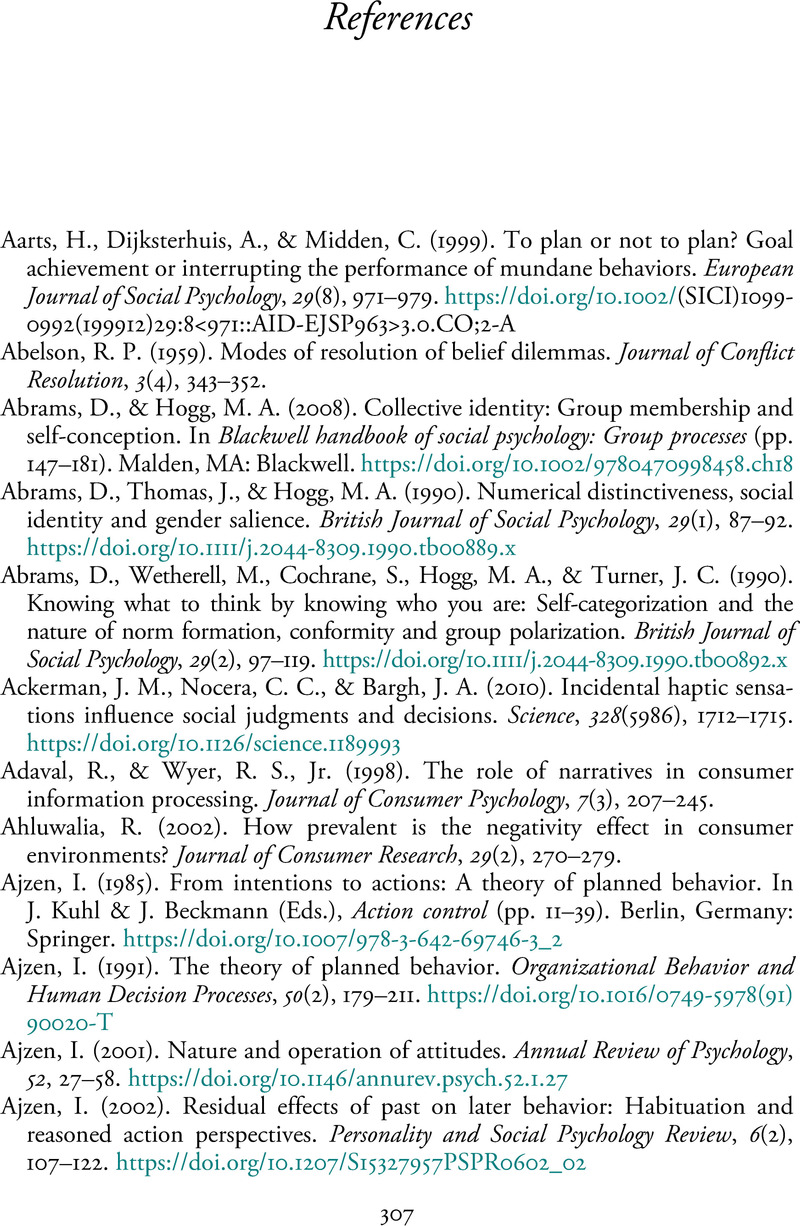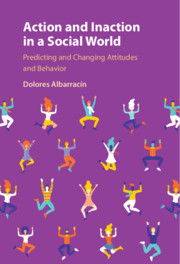Book contents
- Action and Inaction in a Social World
- Action and Inaction in a Social World
- Copyright page
- Dedication
- Contents
- Figures
- Tables
- Preface
- Acknowledgments
- Part I Introduction
- Part II Beliefs, Attitudes, and Behaviors
- Part III Influences of the Past and the Situation
- Part IV The Impact of Persuasive Communications and Behavioral Interventions
- Part V Conclusion
- References
- Index
- References
References
Published online by Cambridge University Press: 21 January 2021
- Action and Inaction in a Social World
- Action and Inaction in a Social World
- Copyright page
- Dedication
- Contents
- Figures
- Tables
- Preface
- Acknowledgments
- Part I Introduction
- Part II Beliefs, Attitudes, and Behaviors
- Part III Influences of the Past and the Situation
- Part IV The Impact of Persuasive Communications and Behavioral Interventions
- Part V Conclusion
- References
- Index
- References
Summary

- Type
- Chapter
- Information
- Action and Inaction in a Social WorldPredicting and Changing Attitudes and Behavior, pp. 307 - 367Publisher: Cambridge University PressPrint publication year: 2021



